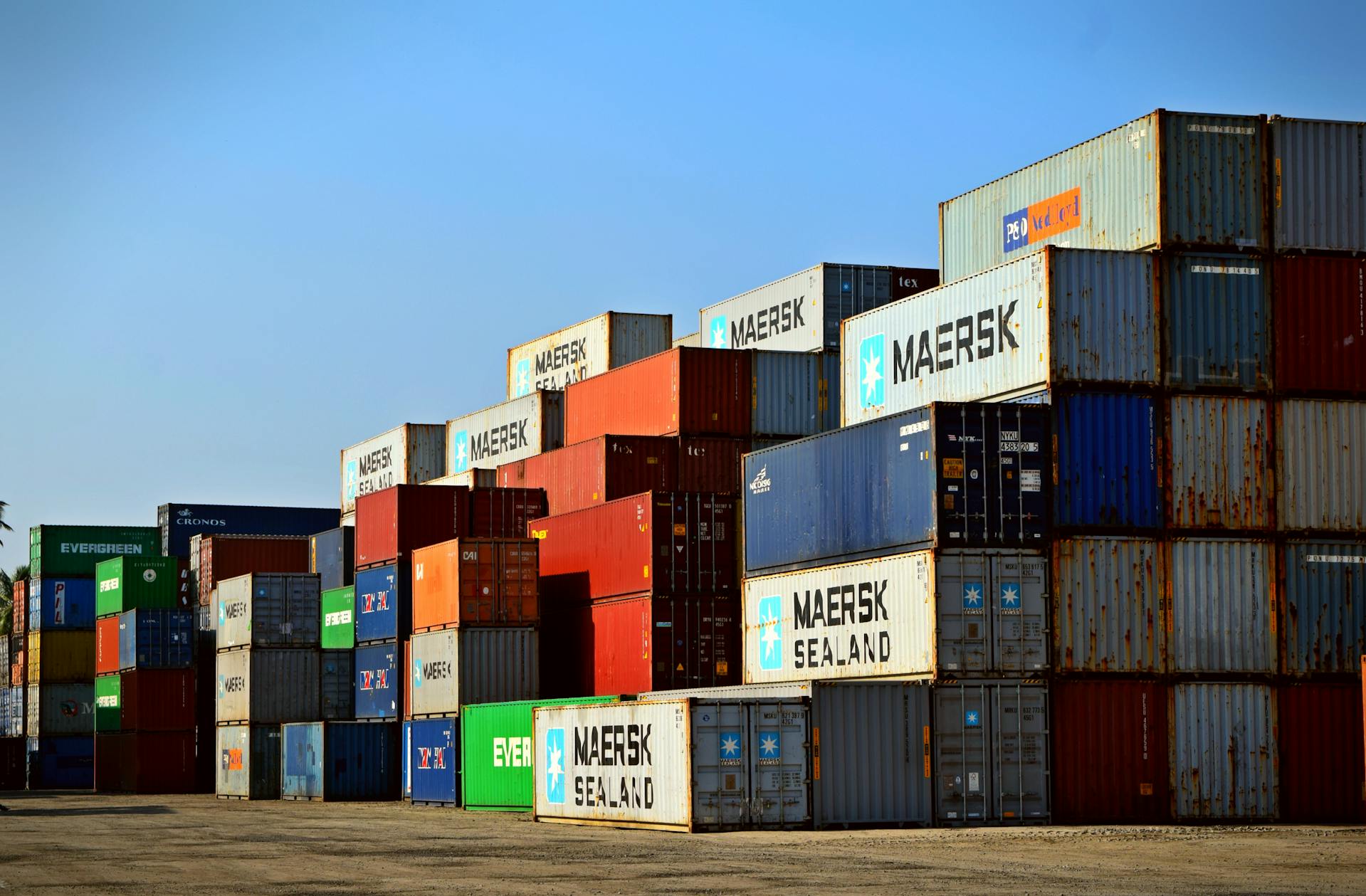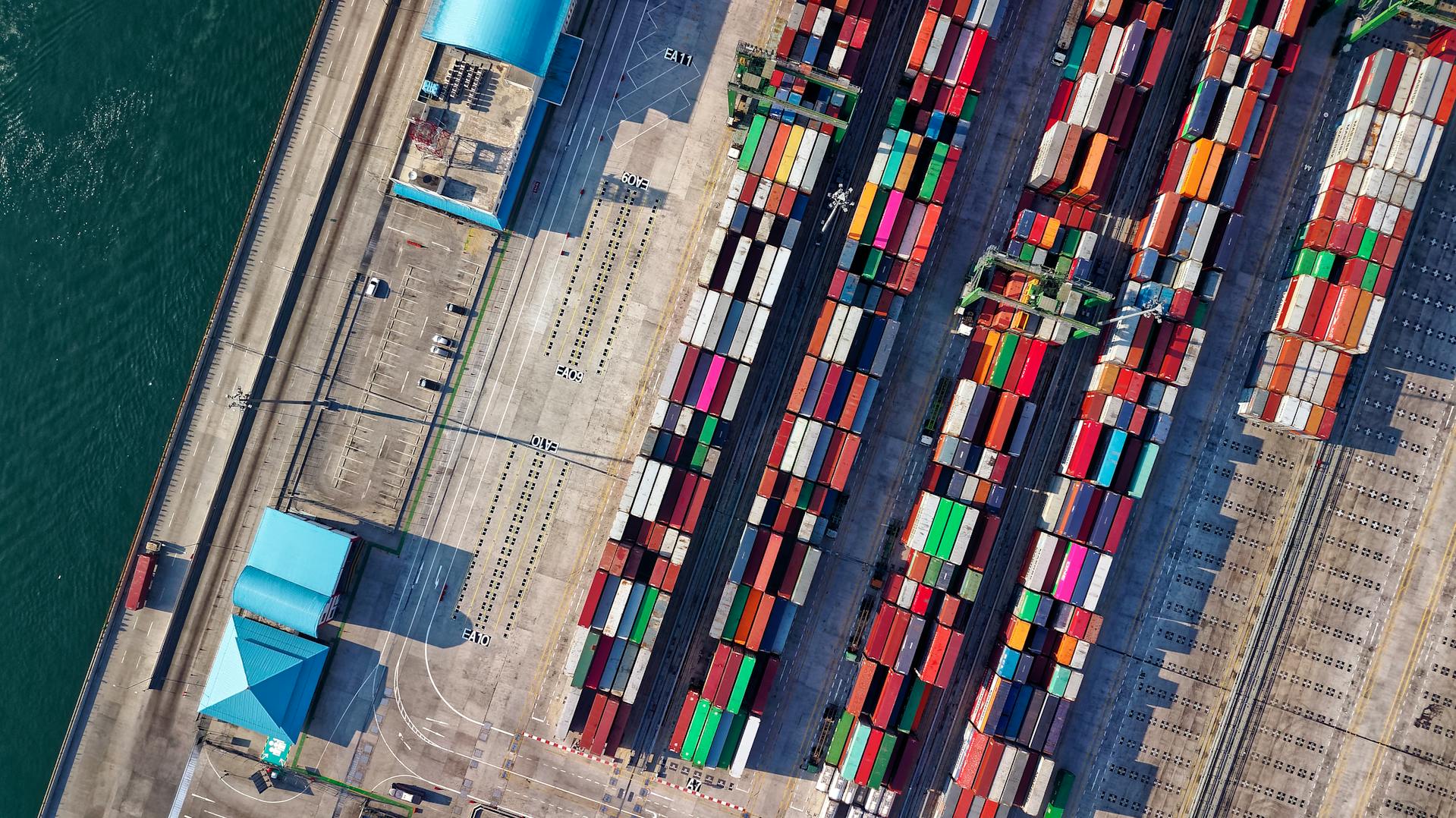Unlock global potential with a smarter cross‑border ecommerce strategy. Learn practical tips, real-world insights, and growth frameworks to expand confidently.
Key Takeaways
→ Global Growth = Strategy & Structure
Success comes from treating international expansion as an evolving system—not one-off markets—by building scalable processes, tech stacks, and local compliance capabilities.→ Localization Wins Trust & Conversions
Translating content is basic—true cross-border success comes through cultural adaptation in UX, pricing, logistics, payment, and customer care to meet each market’s expectations.→ Data‑Driven Adaptation Beats Assumptions
Real-time metrics, A/B tests, and market-specific performance tracking reveal what resonates—empowering smarter resource allocation and smarter scaling.
What Is Cross-Border Ecommerce?
Cross-border e-commerce is simply selling your products or services to customers in other different countries through online channels.

What is Cross-Border Ecommerce
It’s like having a store that never closes its doors to international visitors.
Definition and Key Characteristics
Cross-border ecommerce means selling to customers in other countries through digital platforms.
Unlike domestic selling, it involves multiple currencies, international regulations, customs duties, and complex logistics.
The main difference?
Added complexity: customs clearance, shipping, taxes, and compliance vary by country.
But it’s doable — millions of businesses are already doing it successfully.

Characteristics of Cross-Border Ecommerce
Who It’s For
Exporters, marketplaces, and digital service providers all thrive in cross-border ecommerce.
Exporters sell physical products globally — like handmade jewelry from California to Europe.
Marketplaces such as Amazon and Etsy simplify the process for smaller sellers. Digital goods and services like SaaS tools, online education, or design work scale internationally without the logistics overhead.
Market Growth and Trends
Global digital commerce has grown to $1.21 trillion in 2025 from over $500 billion in 2019.
Consumers are more open to international shopping — seeking better prices, exclusive products, and trusted sellers.
They research costs, compare global prices, and expect transparency. The pandemic accelerated this shift, pushing even local-focused businesses to expand worldwide and profitably.
Why Go Global? Benefits of Cross-Border Business
Going global isn’t just about growth — it’s about building a stronger, more resilient business. The benefits go far beyond higher sales.

Benefits of Cross-Border Ecommerce
Expanded Market Reach & Higher Conversions
Selling internationally can multiply your customer base.
A product that underperforms locally may thrive in a new region with stronger demand. Different seasonal trends across countries help balance out low periods, and international markets often bring better conversion rates due to lighter competition.
Increased Sales, Scale, and Competitive Edge
Global expansion improves economies of scale.
You lower costs by producing in higher volumes and spread fixed costs (like marketing and tech) across a wider base from your target market. International customers may also spend more and stay longer.
Being first to enter a market gives you an edge over competitors who arrive later.
Innovation, Risk Mitigation, and Talent
International customers push you to improve products and operations.
Diversifying markets cushions you from local economic issues or currency swings in global cross-border commerce. Going global also opens access to specialized talent and regional expertise that strengthens your whole business.
Brand Visibility and Revenue Diversification
A global presence boosts your brand’s credibility and trust.
It also shields you from market-specific slumps—if one region dips, another can carry the load.
Expansion opens doors to partnerships and gives you richer insights into global consumer behavior, which benefits your entire strategy.
Top Challenges for Cross-Border E-commerce
Global expansion sounds great — until reality hits.
The good news? Every challenge has a solution if you know what’s coming.

Challenges of Cross-Border Ecommerce
Regulatory Compliance & Customs/Taxation Complexity
Every country has its own product regulations, customs documentation, and tax systems.
From banned ingredients fluctuating VAT and duties, and tariff changes, compliance can derail your launch if you’re not prepared.
Solution: Manage this with strong systems and constant monitoring.
Want step‑by‑step guidance on managing customs fees and taxes in Shopify?
Check out The Tariff Survival Guide for Shopify Store Owners
Cross Border Logistics, Shipping Costs, Returns Management
International shipping is costly and slow.
Returns are worse.
Customers want low-cost, trackable delivery and painless returns — even when customs, delays, and expensive logistics say otherwise.
Solution: Reliable carriers and smart warehousing are essential.
Multi-Currency & Payment Processing, Fraud Risks
Supporting local currencies and payment methods is critical, but it introduces complexity.
Fluctuating exchange rates, international fraud, and payment failures hurt trust and revenue.
Solution: Use secure gateways and fraud prevention tools that work globally.
Language, Localization, Cultural Personalization
A good translation isn’t enough.
Localizing UX, payment flows, and marketing messages to match cultural norms is key.
Minor mismatches — like a confusing address field or culturally off visuals—can tank conversion rates.
Solution: Use automated localization integration.
Tax Management and Hidden Costs to Customers
Surprise fees kill trust.
Tariff, VAT, and delivery charges must be shown up front.
Accurate tax and duty calculation per product and region is vital — because customers don’t care whose fault it is when they’re hit with unexpected costs.
Technology, Ecommerce Platform Limitations
Not all platforms handle global needs.
If yours lacks multi-currency, tax logic, or international checkout support, expansion will starting from scratch.
Integrations, performance issues, and data sync challenges only compound at scale.
Customer Service Across Borders
Time zones, languages, and refund rules differ.
Customers expect responsive, localized support — even if you’re asleep. Without multilingual reps and flexible policies, international customer service becomes a friction point.
Economic Instability and IP Protection Risks
Markets shift in the landscape of global e-commerce.
Currency crashes, sanctions, and unstable governments affect operations fast.
IP protection and trademark enforcement also vary, leaving brands exposed.
Stay flexible, monitor changes, and have exit plans if things go sideways.
Choosing Markets and Selling Options
The right market can fuel your global market growth; the wrong one can drain your resources. Smart selection is everything.

Cross-Border – Choosing Markets
How to Decide Which Global Market to Enter
Use data, not guesses.
Start with GDP, consumer spending, and disposable income to assess buying power. Internet penetration and ecommerce behavior reveal if the market’s ready.
Favor countries with cultural or language similarities — like US retailers starting with Canada, the UK, or Australia.
Evaluate market competition, economic stability, and regulatory complexity. A smaller, stable market may outperform a larger but volatile one.
Choose countries where logistics are reliable and compliance isn’t a nightmare.
Cross-Border Selling Options
Localized Websites
Full control, higher cost.
Best for unique products or brand-focused strategies. Requires local domains, payment systems, tax logic, and customer support.
Slow to ramp, but builds lasting equity and customer loyalty.
Regional/Global Marketplaces
Quick market access with less setup.
Platforms like Amazon and eBay bring ready buyers and built-in trust. But you sacrifice control, customer data, and are exposed to platform rule changes.
Success depends on operational strength more than branding.
Digital Services & B2B Offers
Easiest global model.
No shipping, no customs. Services like SaaS, consulting, and digital marketing scale fast. Just mind the time zones, payment norms, and legal differences. Business buyers tolerate friction better if your value is clear.
Start where your strengths match market conditions. Then expand into more complex regions as your systems mature.
Preparing for Success: Planning & Compliance
The best global ecommerce strategies start with solid preparation. Skipping this phase invites trouble.

Cross-Border – Planning and Compliance
Market Research & Product-Market Fit
Going global means knowing how international buyers behave.
Test demand before full investment — what sells at home may flop elsewhere. Research local climate, seasonality, and buying habits. Pricing must reflect local income levels and competition.
Cultural cues matter too: colors, tone, and even product positioning need to resonate locally.
Before committing, analyze your competitive landscape. If big local players dominate, you’ll need a compelling edge. Start with small tests, like ads or marketplace listings, before going full throttle.
Regulatory Review: Restricted Goods, Taxes, Customs
Every market has its own rules. A top-selling item at home might be banned abroad. Verify product restrictions early. Understand import rules, safety certifications, and labeling requirements.
Tax thresholds vary — some countries want registration after a few sales.
Customs classifications impact duties and paperwork. Documentation requirements differ too; some countries demand local-language labels or safety guarantees.
Stay updated — regulations evolve constantly. Build monitoring systems or partner with local experts to stay compliant.
Pricing Strategies: Multi-Currency, Tax, Hidden Costs
Pricing internationally isn’t just currency conversion.
Factor in exchange rates, duties, shipping, and payment fees. Use fixed or dynamic pricing based on your margin tolerance.
Display full costs (taxes and duties) upfront. Monitor competition and adjust pricing to remain competitive or justify premiums.
Plan for local pricing strategies — whether you compete on price, value, or uniqueness. Consider entry pricing tactics to build early traction, but have a roadmap for sustainable pricing afterward.
The secret: flexible systems that adjust to currency swings, cost shifts, and market demands—without wrecking your margins.
Setting Up Your Cross-Border Ecommerce Stack
Your tech stack is the backbone of global success. Get it right early to avoid painful upgrades later.

Cross-Border Tech Stack
Choosing the Right Ecommerce Platform
Not all platforms handle international complexity equally.
- Shopify Markets: Great for multi-currency, taxes, and regional checkout.
- BigCommerce: Strong APIs, supports global payments, good tax tools—more dev needed.
- WooCommerce: Highly customizable but plugin-dependent and dev-heavy.
- Magento: Enterprise-ready, flexible, complex. Best for large-scale needs.
Pick a platform based on your must-haves: currency support, localization, tax logic, and integrations. Migrating from a domestic setup may require serious rework.
Localization: Translation, Currency, UX Personalization
Good localization = local trust. Translate content professionally. Show prices in local currencies and adapt checkout UX. Tailor product descriptions, visuals, and service policies to each region. Update legal docs to comply with local rules like GDPR.
Technology Integration: PIM, ERP, CMS, Multi-Market Standardization
Your tools need to talk to each other.
- PIM: Centralizes product data, allows market-specific tweaks.
- ERP: Syncs pricing, inventory, and orders globally.
- CMS: Manages localized content across regions.
Standardize data formats to avoid chaos. Use APIs that handle time zones, currency, and local addresses. Sync in real time to prevent overselling or delays. Use CDNs and global servers to boost speed for overseas users. Test everything under international conditions.
Bottom line: Start with a strong, integrated stack that handles core global requirements. Add advanced tools as your international growth scales.
Need help managing stock across countries?
Dive into Inventory Management for Shopify: Best Practices to Scale
Logistics, Shipping & Returns
Mess up logistics and you lose customers — fast. A solid logistics strategy is essential to global customer trust and retention.

Cross-Border – Logistics
Partnering with 3PL or Carrier Networks
3PLs (Third-Party Logistics) simplify warehousing, fulfillment, and shipping — ideal for small to mid-sized businesses.
High-volume sellers may benefit from direct carrier deals (FedEx, DHL) for more control and better rates. Regional 3PLs offer specialized support in specific markets, and many brands use multiple partners for global coverage.
Choose partners with strong tech integration. Service level agreements (SLAs) should clearly outline delivery times, damage rates, and support standards. Watch out for hidden fees like fuel surcharges or customs handling.
Customs, Duties, and Tax Compliance Management
Customs delays are usually due to bad paperwork.
Accurate HS codes, clear descriptions, and up-to-date restriction checks prevent packages from getting stuck. Duty rates vary widely by country—5% in one, 25% in another—so know your costs upfront.
Duties collected at delivery create surprise costs. Prepaid duties or DDP pricing improve satisfaction but increase backend complexity. Free trade agreements can reduce costs, but only if origin documentation is precise and compliant.
Efficient Shipping Solutions and Transparent Cost Display
Be upfront about shipping costs.
Use zone pricing for predictability, and offer both express and economy shipping to meet different needs. Free shipping thresholds can boost average order size.
Use reliable shipping calculators and offer realistic delivery estimates that include customs and holidays. Provide detailed tracking; “in transit” won’t cut it when someone’s waiting 3 weeks.
Cross-Border Returns Policy and Reverse Logistics
International returns are expensive and slow.
Define who pays for return shipping—prepaid labels improve trust but increase cost. Use restocking fees to recover losses.
Offer local return centers in key regions if possible. Return authorizations help you control what’s worth accepting. Update your warranty/refund policies to handle currency fluctuations, banking fees, and long return timelines.
In short: balance clear expectations and efficiency with customer experience. Returns will never be cheap, but they don’t have to be painful.
Payments & Fraud Prevention
International payments are messy. Miss one piece, and you’re losing conversions, revenue, or your mind.

Cross-Border Payments and Fraud
Multi-Payment Gateway Selection
Not all gateways work everywhere.
- European shoppers prefer SEPA; Chinese buyers use Alipay/WeChat; some markets still want cash-on-delivery.
- Stripe and PayPal work well in many regions, but not all. Always research gateway reach and local preferences.
- Payment methods vary even within one gateway—ensure local bank transfers, wallets, or BNPL options are supported.
Watch fees: FX, cross-border charges, and delayed settlements kill margins.
Integration needs to be seamless – your site should auto-display correct gateways per region. Backup processors are a must for reliability.
Comply with local payment regulations (PCI DSS, regional laws) or face fines and lost trust.
Multi-Currency Settlement & FX Handling
People want to pay in their own currency.
- Real-time FX pricing feels fair, but needs stable tech.
- Show prices in local currency, your base, or both—whatever drives trust.
- Currency fluctuations eat margins, so hedge if you’re operating at scale.
Get smart about settlements: some gateways auto-convert to your base currency; others let you hold foreign currency and choose when to convert.
Multi-currency accounting and banking need serious attention.
Fraud Detection Tools and Best Practices
Fraud loves complexity, and challenges for cross-border transactions are full of it.
- Use geolocation and velocity checks to spot shady activity.
- AVS and CVV are useful, but don’t always work internationally. Layer your defenses.
- Machine learning systems help spot patterns that manual review can’t catch.
Avoid false positives — they drive real customers away.
Train your review team on global address norms and behavior.
Keep fraud blacklists updated but flexible to avoid blocking entire countries in your cross-border business.
Minimize chargebacks by knowing local dispute laws and providing clear communications.
The goal? Stop fraud without scaring off legit buyers. Keep it tight, but fair.
Ready to streamline fulfillment and scale efficiently?
Discover proven tactics in Shopify Fulfillment Strategies That Actually Work
Launching & Scaling Across Markets
Expanding internationally isn’t just about taking your domestic strategy and sprinkling in some translation.
Each new market brings its own mix of behaviors, expectations, and landmines. The companies that succeed understand that scaling means adaptation, not replication.

Launching and Scaling Across Borders
Market-specific launch strategies
A strong launch starts with the humility to test first, not charge in blind.
Soft launches let you test a handful of products in targeted areas, limit ad spend, and collect early data without setting your whole strategy on fire. It’s about learning fast and failing small.
Local partnerships can be a force multiplier — think resellers, distributors, or affiliate networks who already understand the cultural landscape. They’ll eat some of your margin, but they often provide infrastructure and credibility for cross-border commerce that you can’t replicate from afar.
You also need to respect timing. Local buying seasons, holidays, and even climate can make or break your launch. Sending wool coats to Sydney in July isn’t just unwise — it’s embarrassing.
Know the rhythm of the market before you try to play in it.
SEO and multilingual PPC
Search behavior changes by geography.
A literal translation of your best domestic keywords won’t cut it. You need native speakers doing native research. Hosting your international content on region-specific domains or subdirectories can also help with search visibility and trust.
Pay-per-click needs just as much localization.
The cost per click, platform popularity, and cultural tone of successful ads can vary dramatically. Copy-pasting English campaigns into new markets is a lazy mistake. If your ads feel foreign, your brand will too.
Geo-targeted ads & social
Social media is hyperlocal in disguise.
While Facebook and Instagram work well in some regions, others rely on platforms like WeChat, Line, or VK. And what goes viral in one culture may totally flop — or offend — in another. Visuals, tone, even emoji usage needs a second look.
Influencer marketing isn’t plug-and-play either.
Local creators know how to talk to their audience. Treating them like global copy-paste machines only ensures your campaign feels inauthentic.
Building repeatable international growth plans
Scaling across markets means building repeatable systems without turning your brand into a factory line. Document what works, but stay flexible. Market entry plans should guide, not strangle, your future expansions.
You’ll also need clarity on what to centralize and what to localize. Some decisions, like product development, can be global. But customer service, returns, and fulfillment usually need a local touch.
Managing operations: inventory, customer support
Operations get chaotic fast.
What’s easy domestically becomes a scheduling nightmare for global cross-border operations. Your forecasts need to consider local trends and seasonality; otherwise you’ll be out of stock in Berlin and overstocked in Seoul.
Customer support has to stretch across time zones and languages. This means real humans who speak the language—and not just technically. They need to understand tone, expectations, and how people actually interact with brands in that market.
Monitoring: performance metrics, conversion rates, market behavior
Once live, you’ll need a way to separate signal from noise.
A 1.5% conversion rate in one country might be stellar. In another, it’s a problem. Fraud rates, payment issues, ad costs, and customer feedback all vary by geography and must be tracked as such.
Currency shifts can create illusions, masking bad performance or inflating success. Don’t just look at topline revenue. Dig into margin, return rates, and LTV in local currency terms.
Scaling internationally is a balancing act between consistency and flexibility, centralization and localization. Do it right, and you build a business that’s not only global, but resilient. Do it wrong, and you’re just another brand with a warehouse full of unsold stock in the wrong hemisphere.
Cross-border platform comparisons
Choosing a platform for international expansion isn’t about picking the flashiest one. It’s about finding a system that actually matches your operational complexity and your tolerance for tech headaches.
Each platform has a different idea of what “cross-border” means, and some do a better job of translating that into working features than others.
| Feature/Criteria | Shopify Markets | BigCommerce | WooCommerce |
| Ease of Use | Very easy – minimal coding, great UI | Moderate – requires technical knowledge | Difficult – dev-heavy, high setup burden |
| International Features | Built-in multi-currency, localized checkout, tax display | Supports localized pricing (beyond FX), solid tax tools | Requires multiple plugins for each global feature |
| Customization | Limited – relies on apps for advanced functionality | Strong – flexible with APIs and system integration | Very high – full control over every layer |
| Ideal For | B2C brands selling physical goods | Mid-to-large businesses with complex catalogs | Teams needing total control or highly unique setups |
| Weaknesses | Limited for complex pricing, B2B, and inventory management | Setup complexity may overwhelm small teams | Plugin conflicts, hidden dev and maintenance costs |
| Cost Profile | Moderate – platform + app fees | Moderate to high – depends on implementation scope | Starts cheap, can get expensive due to add-ons and dev time |
| Integration Strength | Strong app ecosystem for quick fixes | Built for deeper ERP/tax/logistics connections | Depends entirely on plugins and custom builds |
| Scalability | Good up to a point – then needs workarounds | High – handles growing complexity well | Unlimited, but you’ll pay in complexity |
Shopify Markets is great for fast international expansion with minimal dev work. It handles currency, checkout, and taxes well, but struggles with complex pricing, multi-location inventory, and B2B use cases.
BigCommerce offers more control and deeper integrations, ideal for complex catalogs and ERP systems—but it requires a tech-savvy team to manage its added complexity.
WooCommerce gives you total flexibility and control, but everything from taxes to shipping requires plugins. It’s free to start, but costs and chaos can escalate fast without strong developer support.
Then there are the specialists.
Zonos and FlavorCloud aren’t platforms in themselves; they’re cross-border infrastructure layers.
Zonos is like the international compliance butler you didn’t know you needed. It handles duties, taxes, landed cost calculations, and shipping paperwork. If your main business strength is marketing, not customs regulation, Zonos can do the heavy lifting. Just know that integration quality depends heavily on the platform you’re using.
FlavorCloud, on the other hand, is your shipping optimizer. It digs into routes, rates, and carrier reliability to squeeze every ounce of efficiency from international fulfillment. You won’t need to understand how they save you money; you’ll just see that they do.
Ultimately, no platform is perfect for everyone.
- Shopify is great if you want to grow fast and don’t mind the trade-offs.
- BigCommerce works well for structured growth with complex needs in cross-border business.
- WooCommerce is for control freaks and dev-heavy businesses.
- Zonos and FlavorCloud add brains to the backend if your main platform isn’t built for cross-border gymnastics.
Match the tool to your actual needs for your cross-border business model, not your aspirations. Flashy features don’t help if your team can’t use them, or worse, if they break something else in the process.
Launching a product internationally?
Learn how with our Product Launch Guide for Shopify
Cross the Border and Go Global
Cross border business isn’t a one-and-done project — it’s an evolving growth system. The businesses that thrive globally treat international expansion as an ongoing capability, not a launch checklist.

Go Global
For ongoing cross-border ecommerce strategy, build systems, shortcuts. Develop internal expertise, not reliance on outside consultants. Treat every new market as both a test and a teacher.
And above all: stay flexible. What works today in one country could backfire next quarter in another.
Global ecommerce isn’t about going big; it’s about going smart. Focus on learning, adapting, and scaling only what proves itself. That’s how scrappy turns into scalable.
Compare how fast your store is to a huge sample of other stores. Get benchmarked and find out where you can improve your speed to make more sales.How fast is your Shopify store?
FAQ
What is cross-border ecommerce and how does it benefit my business?
Cross-border ecommerce involves selling to international customers through digital channels. It expands your global reach, increases ecommerce sales, and helps mitigate local market risks in cross-border commerce. Smart expansion into new markets boosts brand visibility and improves revenue diversification.
How can I manage cross-border shipping and logistics effectively?
Use 3PL providers and carrier networks that support international shipping with customs documentation, tax compliance, and optimized delivery. Reliable logistics and supply chain solutions reduce costs, minimize returns, and enhance customer satisfaction across global markets.
What are key compliance and tax considerations for cross-border trade?
International ecommerce requires adherence to local regulations, customs documentation, and VAT/duties per region. Set up automated compliance management systems to avoid delays, prevent fines, and ensure seamless market entry and cross-border sales continuity.
How do I optimize payment and fraud protection for the global marketplace?
Support multi-currency and localized payment methods like Alipay, SEPA, or BNPL to boost conversion rates. Use fraud detection tools with behavior tracking and geolocation to reduce chargebacks while maintaining a seamless customer checkout experience.
How does localization impact cross-border ecommerce performance?
Localization improves conversion by aligning language, UX, pricing, and content with local customer behavior. Smart personalization and cultural adaptation increase trust, reduce bounce rates, and support scalable international expansion into diverse global markets.



